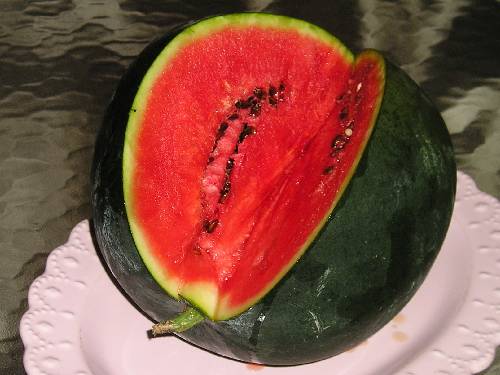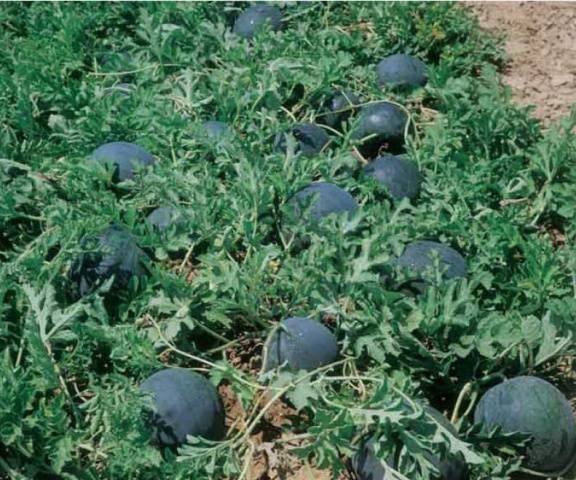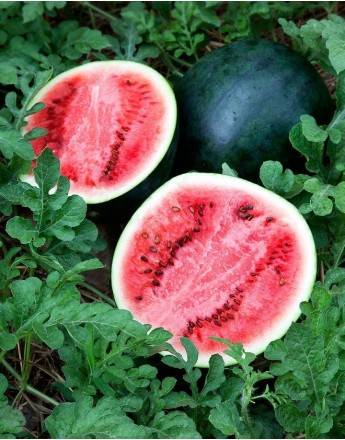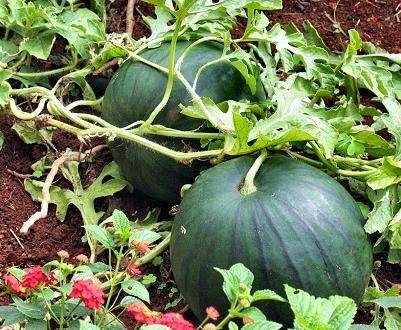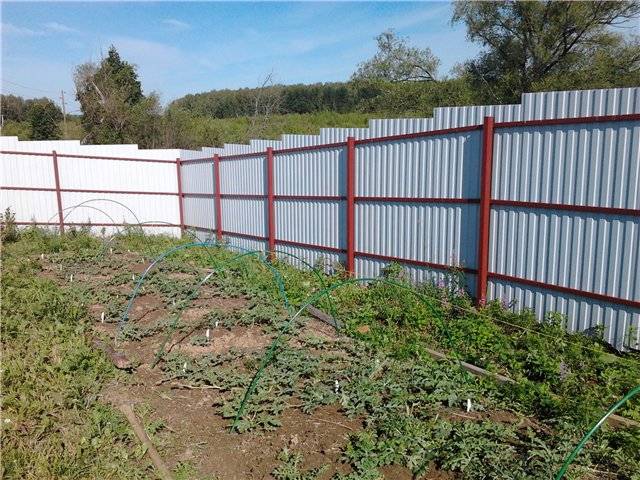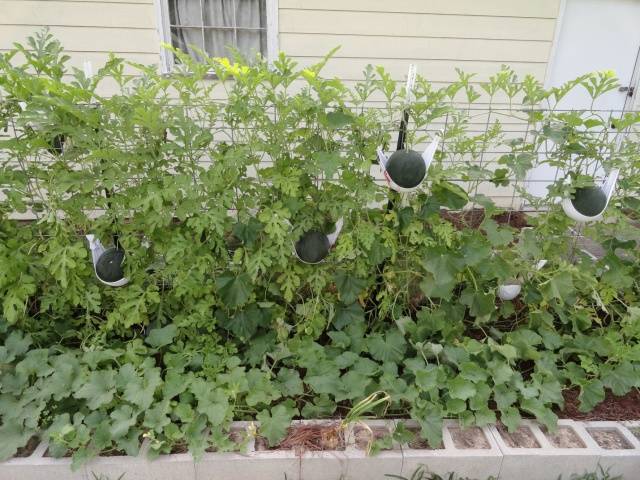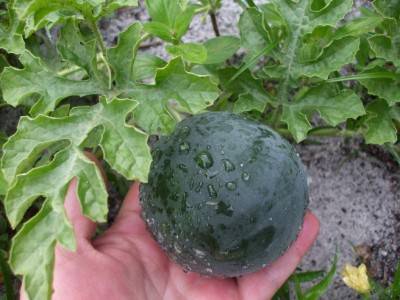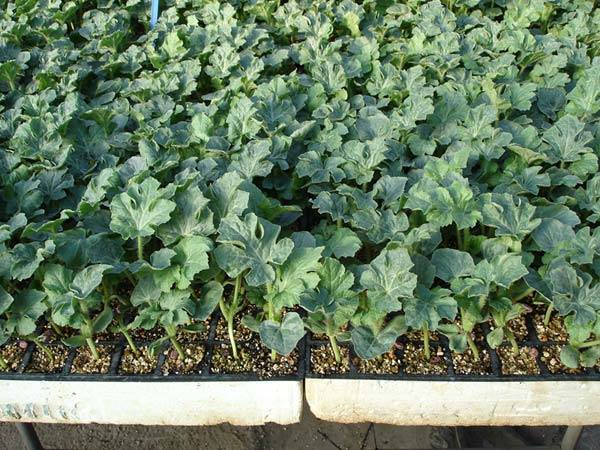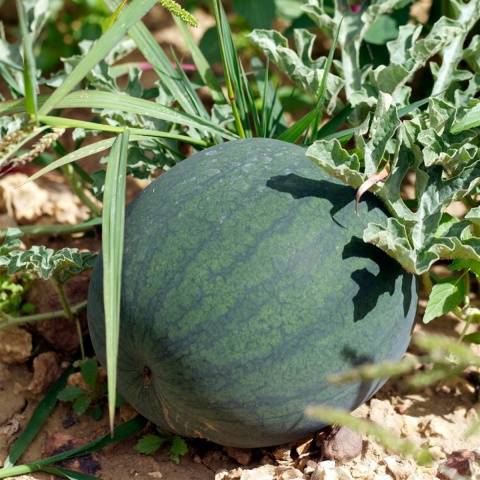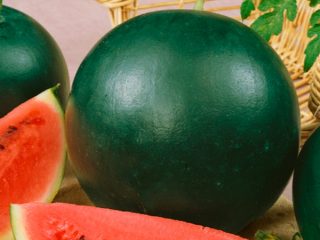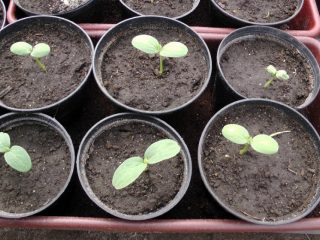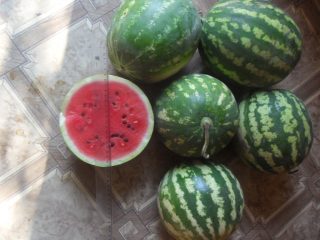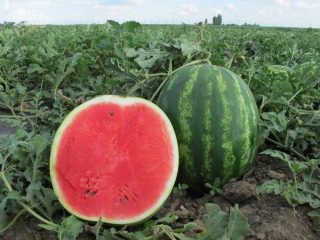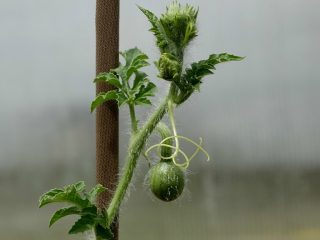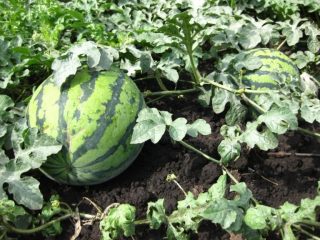Content
Recently, watermelon has become a fashionable serving for summer aperitifs. But still, a sweet and refreshing dish is more familiar as a dessert, especially when there is a small fruit on the table, like the Suga Baby watermelon. Gardeners are happy to grow this southern plant with an early ripening period, bred abroad in the 50s of the XX century.
Characteristic
From the time of germination to ripening, the variety develops for 75-85 days. Grown through seedlings and planted in open ground or in a greenhouse, Sugar Kid, as the name of the watermelon variety Suga Baby is literally translated from English, manages to ripen in the warm season of central Russia. Unpretentious, resistant to characteristic diseases of melons, the plant quickly spreads through the areas of gardeners. The variety was included in the State Register in 2008, it is recommended for cultivation in the Central Black Earth Region, as an orchard crop. The originators are Lance CJSC, Moscow, and Poisk Agrofirm from the Moscow Region.
One whip of this watermelon variety can grow 6-12 kg of fruit. The yield per square meter is 8-10 kg. In the southern regions, the Shuga Baby variety is also cultivated for commercial production. Large, weighing 3-6 kg, the fruits of the variety are not as huge as those of high-yielding 10-12 kg watermelons. But sometimes consumer demand turns towards moderate-sized fruits, considering them the best from an environmental point of view. Crop from plants of this variety is harvested from mid-August.
Siberian melon
The cultivation of the Suga Baby watermelon is also possible in Siberia, you just need to pay attention to the degree of illumination of the seedlings and the adult plant. If the light level for ripening watermelon fruits is low, they are tasteless and watery.
- For successful ripening, watermelon fruits require at least 8 hours of exposure to sunlight;
- Planting of this variety works well on the slopes of the southern or southwestern direction;
- You cannot plant watermelons in peat soil;
- Sand is poured into the holes for the Suga Baby variety so that the earth is loose and light;
- Often, gardeners for watermelon plants cover the beds with a black film that accumulates heat;
- Scientists agronomists of the Far East successfully cultivated watermelons on the experimental plot, planted on hills covered with film. The height of the mounds is 10 cm, the diameter is 70 cm. Three sprouts of watermelons were planted in the hole, stalking the plants, and with chasing after 6 leaves. The mounds were closed up according to the scheme 2.1 x 2.1 m.
Description
The plant of the Shuga Baby variety is medium-growing. Round fruits with dark green, thin but dense skin. On the surface of the watermelon, rather weakly expressed stripes of a darker shade are visible. When the fruit is fully ripe, the peel acquires a rich dark color. Bright red juicy pulp is very sweet, grainy, delicate in taste. There are few seeds in the pulp of the Suga Baby watermelon, they are dark brown, almost black, small, do not interfere with enjoying the delicious honey taste of pleasantly crispy red slices. The sugar content of the fruit of this variety is 10-12%. In garden plots, the fruits reach a mass of 1-5 kg.
Advantages and disadvantages
The long cultivation period and the popularity of the hybrid ambiguously indicate its high qualities. Due to the obvious advantages of the variety, watermelon is a welcome guest on the plots.
- Balanced taste and delicate aroma of fruit pulp;
- Thin rind;
- Early ripening;
- Transportability and keeping quality;
- Ideal for refrigerated storage;
- The unpretentiousness of the variety to climatic conditions;
- Drought resistance;
- Fusarium immunity.
Among the shortcomings of the variety, the small size of the fruit is most often called.
Growing
In areas with a relatively short summer, it is possible to grow only early ripening watermelons, which are completely filled with aromatic juice in three months. Some gardeners sow watermelon seeds in the ground, but this planting is not always successful due to the vagaries of the weather. With the onset of a sudden cold snap in early summer, the seeds may not germinate, but die in the cold soil. Planting the Suga Baby watermelon through seedlings will ensure the growth of the fruit in any weather. The variety works well in plastic or polycarbonate greenhouses and in the northern regions.
Watermelon seedlings are planted in open ground as soon as the soil at a depth of 10 cm warms up to 12-15 0C. Sandy soils, as a rule, warm up to this temperature in central Russia by the end of May or early June. Considering that one-month-old seedlings are planted, it is necessary to sow the seeds of the Suga Baby watermelon in the last days of April.
Seed preparation
If the purchased seeds are not processed, they are prepared for sowing, preventing the development of common diseases.
- The seeds are disinfected for a quarter of an hour in a slightly pink solution of potassium permanganate;
- The grains are soaked in some preparation for pre-sowing seed treatment;
- One easy option is to soak the seeds in warm water for up to 12 or 24 hours. The grains swell and germinate quickly in warm soil.
Seeds of the Suga Baby variety from well-known producers are often purchased with pre-sowing treatment, covered with a shell. Such seeds are only soaked before sowing in order to germinate faster.
- The seeds are placed in a gauze bag or placed between layers of paper towels, which are kept moist for three days;
- When the sprout hatches, the germinated seeds are carefully placed into the substrate to a depth of 1-1.5 cm and sprinkled with soil.
Preparing seedling substrate
The soil should stand at room temperature so that it is warm for sowing the seeds of the Suga Baby variety.
- The soil is taken from the usual garden or turf, mixed with humus and sand, so that it is light and loose. The soil is prepared in a ratio of 1: 3: 1;
- Another option for the substrate: 3 parts of caked sawdust and 1 part of humus;
- To the substrate is also added per 10 kg of a mixture of 20 g of nitrogen and potassium agents, 40 g of superphosphate.
Seedling care
The pots with sown watermelon seeds are left in a place where the temperature is kept up to 30 0C. Sprouts from germinated seeds appear in a week or less.
- To prevent the Suga Baby watermelon plants from stretching, the container is transferred to a cool room, up to 18 0C;
- After a week, the mature sprouts are provided with comfortable warmth - 25-30 0C;
- Sprinkle the substrate moderately with warm water;
- When 2 or 3 true leaves appear, they are fed with a solution of 5 g of superphosphate and 2 g of potassium salt in 1 liter of water.
15 days before the expected date of planting, watermelon seedlings are hardened by taking them out into the air if the plants are moved to the garden. They start from short periods of time - an hour or an hour and a half, gradually increasing the presence of seedlings on the street. By this period, the seedlings already have 4-5 leaves.
Plants in the garden
The cultivation of watermelons of the Suga Baby variety provides for their planting according to the 1.4 x 1 m scheme.
- If the plant is led along a trellis, at a distance from the root up to 50 cm of the length of the lash, any lateral shoots must be removed;
- The next branches are pinched after the third leaf;
- Watered with warm water, spending 1 sq. m beds 30 liters of water;
- Watering is limited only when large watermelons have formed, and the ripening process of the pulp begins;
- The soil is constantly loosened and removed weeds;
- Scourges of watermelons grown in the spread are sprinkled with earth in several places to form new roots for additional plant nutrition.
If watermelon seeds are planted directly into the ground in mid or late May, they are deepened by 4-5 cm. For a quick emergence of shoots, a mini-greenhouse is made from plastic containers for each hole. As soon as the green leaves appear, the plastic is removed.
In the greenhouse
Seedlings are planted according to the scheme 0.7 x 0.7 m. Humus, wood ash and sand are placed in the holes. Watermelon plants are tied up or left to develop in the spreading area, if space permits.
- 10 days after planting, Suga Baby watermelons are fed with saltpeter, dissolving 20 g in 10 liters of water;
- Top dressing with complex fertilizers for watermelons is carried out every one and a half weeks;
- During flowering, if the weather is cloudy and the greenhouse is closed, gardeners need to pollinate the flowers of the watermelon themselves;
- Lateral shoots and excess ovaries are removed, leaving 2-3 fruits on the main whip up to 50 cm long.
A tasty harvest largely depends on the vagaries of the weather, but ingenuity and careful care can ensure the full ripening of the desired fruits.
